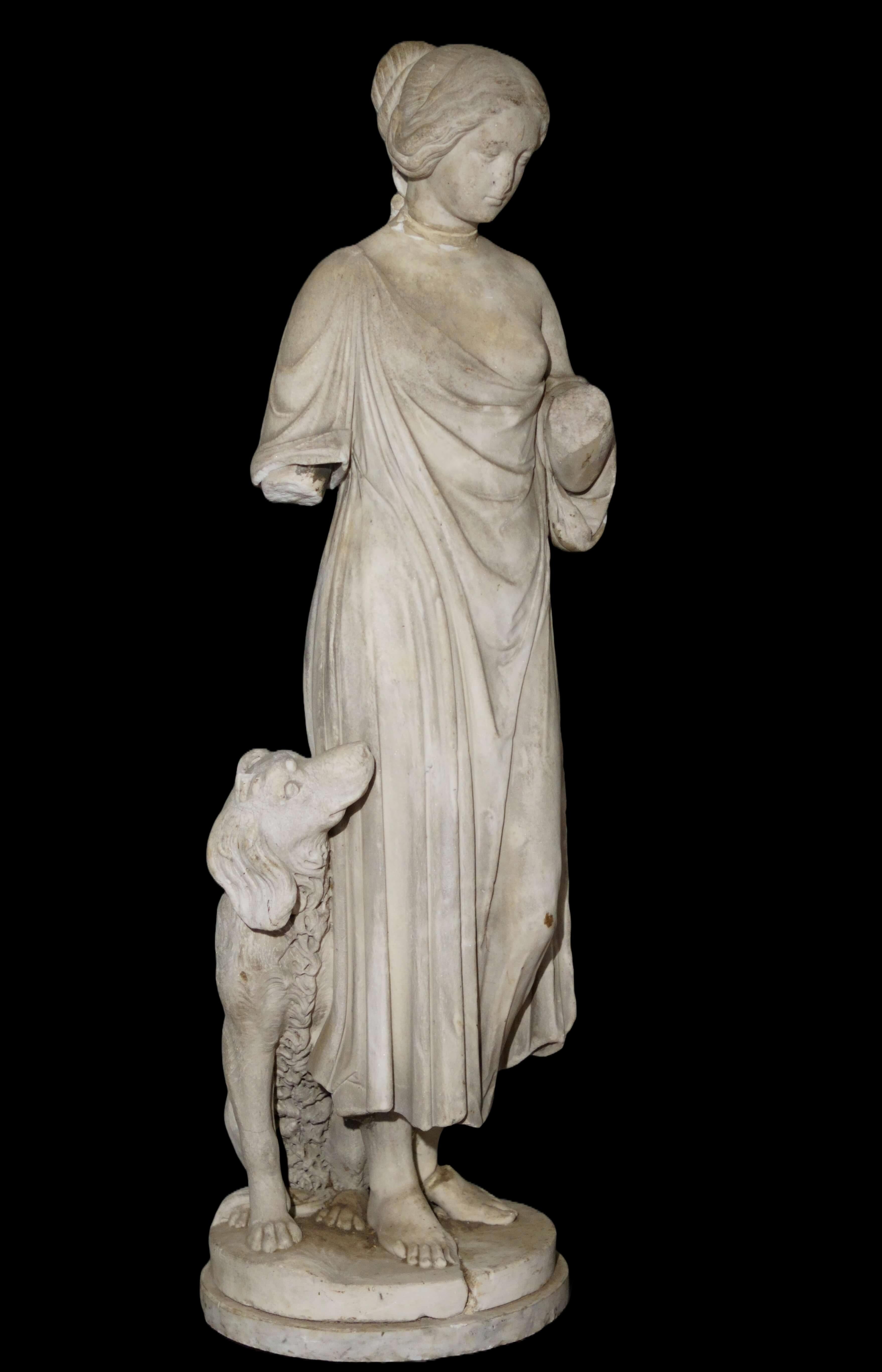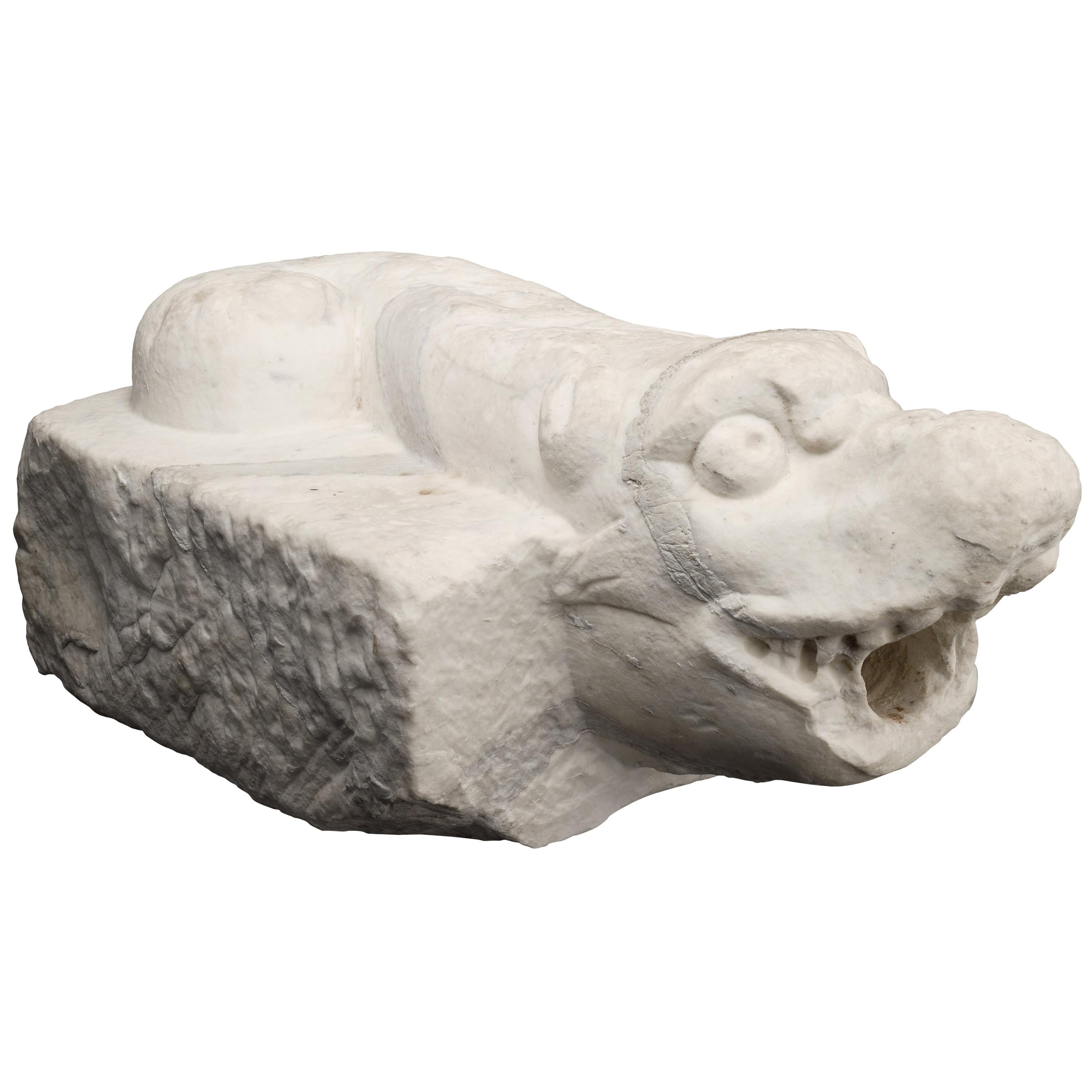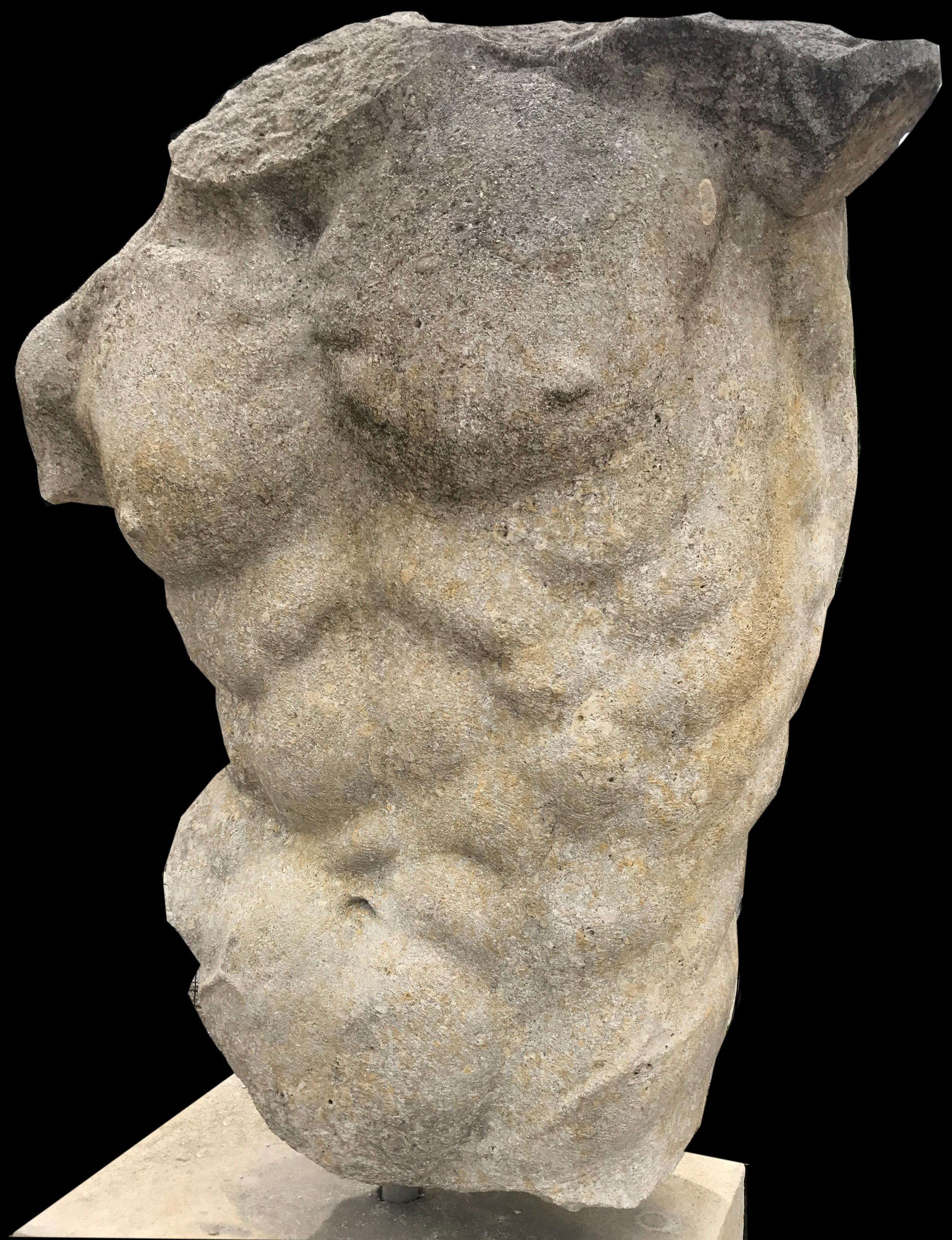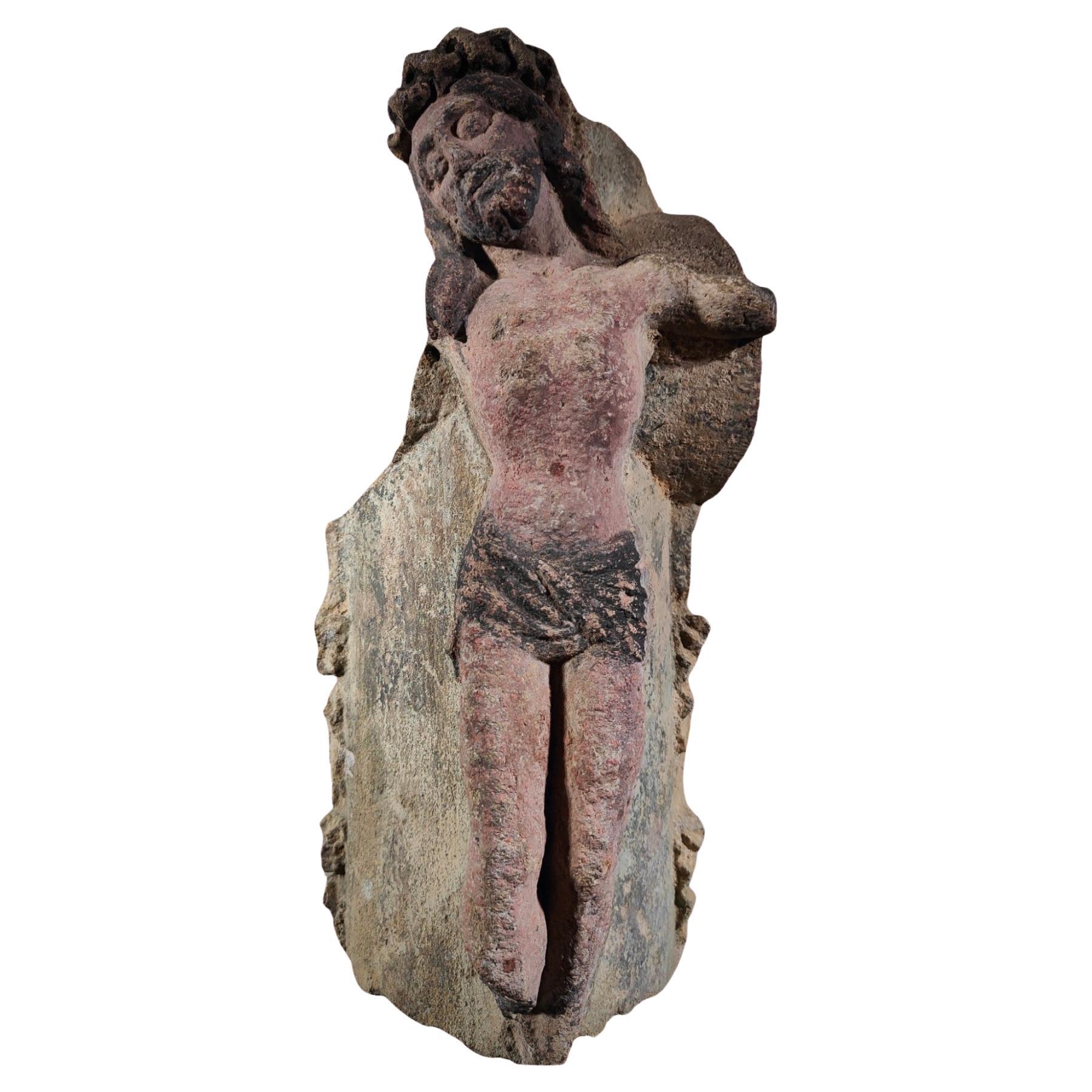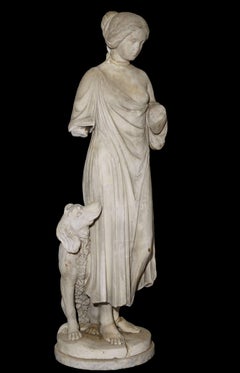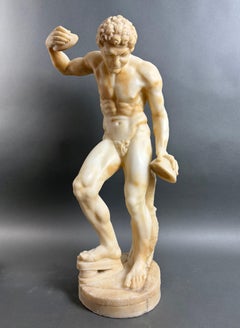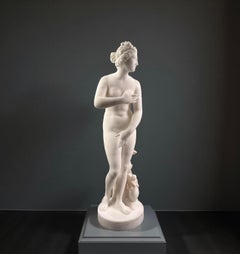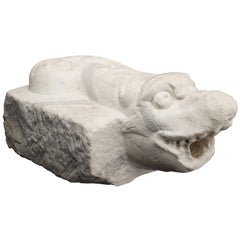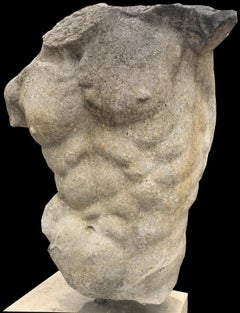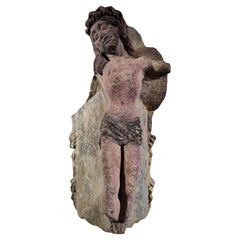Items Similar to Great Renaissance Serene Stone Sculpture of Greyhound Florence 16th century
Want more images or videos?
Request additional images or videos from the seller
1 of 9
UnknownGreat Renaissance Serene Stone Sculpture of Greyhound Florence 16th centuryunfamiliar
unfamiliar
$5,348.82
£3,983.20
€4,500
CA$7,384.77
A$8,187.11
CHF 4,302.65
MX$100,196.79
NOK 53,735.66
SEK 50,436.30
DKK 34,261.50
About the Item
16th-century Florentine sculptor, greyhound in pietra serena.
This fascinating sculpture, which has come down to us in fragmentary form, depicts a dog, an elegant greyhound crouching, its head raised in a menacing howl. The fine execution testifies to the hand of a masterful sculptor active in the first half of the 16th century in Florence.
Pietra serena is a native Tuscan stone that was quarried in the hills above Florence, specifically in Fiesole. For centuries observed in the form of architectural elements, in 15th-century Florence it was chosen as a material to be molded into the sinuous forms of sculpture. Its compactness and homogeneity of materials, together with its characteristic chromaticism, contribute to a particularly elegant and delicate sculptural effect, so much so that it lent itself to interesting compositional experimentation in the skilled hands of sculptors such as Donatello, Geri and Desiderio. da Settignano. It is they who show the city, which is getting to know pietra serena through Filippo Brunelleschi's revolutionary architecture, how it can also contain vigorous animal forms, living images of life-size figures, soft profiles of women and children.
The gray stone gives the animal a new majesty, vitality and solemn elegance through the expressiveness of the face.
Splendid secular patina intact.
The sculpture comes from a Tuscan castle, which for a long time housed a famous collection of pietra serena statues in its halls.
The measuraments
L cm 70
D cm 30
H cm 45
- Creation Year:unfamiliar
- Dimensions:Height: 17.72 in (45 cm)Width: 27.56 in (70 cm)Depth: 11.82 in (30 cm)
- Medium:
- Movement & Style:
- Period:
- Condition:
- Gallery Location:Pistoia, IT
- Reference Number:1stDibs: LU2746215460592
About the Seller
4.5
Vetted Professional Seller
Every seller passes strict standards for authenticity and reliability
Established in 1997
1stDibs seller since 2024
17 sales on 1stDibs
- ShippingRetrieving quote...Shipping from: PISTOIA, Italy
- Return Policy
Authenticity Guarantee
In the unlikely event there’s an issue with an item’s authenticity, contact us within 1 year for a full refund. DetailsMoney-Back Guarantee
If your item is not as described, is damaged in transit, or does not arrive, contact us within 7 days for a full refund. Details24-Hour Cancellation
You have a 24-hour grace period in which to reconsider your purchase, with no questions asked.Vetted Professional Sellers
Our world-class sellers must adhere to strict standards for service and quality, maintaining the integrity of our listings.Price-Match Guarantee
If you find that a seller listed the same item for a lower price elsewhere, we’ll match it.Trusted Global Delivery
Our best-in-class carrier network provides specialized shipping options worldwide, including custom delivery.More From This Seller
View AllAltorilievo in Marmo della Montagnola Senese Profilo Siena XIV secolo
Located in Pistoia, IT
Altorilievo in marmo della Montagnola Senese raffigurante un profilo femminile a mezzo busto, Siena, XIV secolo.
L'altorilievo, nella tradizione senese del XIV secolo, si caratter...
Category
15th Century and Earlier Medieval Figurative Sculptures
Materials
Marble
Large Italian Neoclassical Marble Sculpture Allegory 18th century
Located in Pistoia, IT
Impressive neoclassical Carrara marble sculpture depicting the Allegory of Friendship and Loyalty, second half of the 18th century.
The sculpture depicts Friendship as a classical ...
Category
Late 18th Century Italian School Figurative Sculptures
Materials
Marble
Large Alabaster Sculpture Satyr with Cymbals Volterran workshop 19th century
Located in Pistoia, IT
Large alabaster sculpture depicting the Satyr with cymbals, 19th-century Volterra workshop.
The satyr with cymbals is a Roman marble sculpture preserved in the Uffizi Museum in F...
Category
1870s Italian School Figurative Sculptures
Materials
Alabaster
White Marble sculpture Venus dei Medici Italy Florence mid-19th century
Located in Pistoia, IT
White Carrara marble sculpture depicting the Medici Venus, Florentine workshop, second half of the 19th century.
The Venus de' Medici is an original Greek Hellenistic marble statu...
Category
Late 19th Century Italian School Figurative Sculptures
Materials
Marble
Large Neoclassical White Marble Sculpture Venus Italica mid-19th century
Located in Pistoia, IT
Venus Italica, imposing sculpture in white Carrara marble, mid-nineteenth-century Roman atelier.
Antonio Canova made several sculptures depicting Venus. The first was made as compen...
Category
Mid-19th Century Italian School Figurative Sculptures
Materials
Marble
Terracotta Bust Portrait of a Lady Italy 18th century
Located in Pistoia, IT
Terracotta bust, portrait of young lady, Italy, Tuscany, second half of the 18th century.
The bust, entirely hand-molded, depicts a young woman with an intricate hairstyle wearing ...
Category
Late 18th Century Italian School Figurative Sculptures
Materials
Terracotta
You May Also Like
Italian Ancient Marble Sculpture Fountain, Late 16th Century
Located in Milano, IT
Sea monster
Carrara marble mouth fountain
Italy, late 16th century
It measures 13.8 x 31.5 x 18.9 in (35 x 80 x 48 cm)
State of conservation: some small evident gaps and widespread signs of wear due to outdoor exposure. The gray marks crossing it do not come from restoration, but are rather the natural veins of the marble.
This work has some morphological characteristics typically associated with the iconography of the sea monster: an elongated muzzle, sharp teeth, protruding eyes, elongated ears, and a coiled serpent's tail.
An in-depth series of studies on artistic depictions of the sea monster attempted to verify how this symbol evolved in antiquity in the European and Mediterranean contexts and how it gradually changed its image and function over time. The iconography itself is mutable and imaginative and its history is rich with cultural and artistic exchange, as well as the overlapping of ideas. This occurred so much that it is difficult to accurately pinpoint the "types" that satisfactorily represent its various developments.
However, we can try to summarize the main figures, starting from the biblical Leviathan and the marine creature that swallowed Jonah (in the Christian version, this figure was to become a whale or a "big fish", the “ketos mega”, translation of the Hebrew “dag gadol”). Other specimens ranged from the dragons mentioned in the Iliad (which were winged and had legs) to "ketos” (also from Greek mythology), the terrifying being from whose Latinized name (“cetus”) derives the word "cetacean". See J. Boardman, “Very Like a Whale” - Classical Sea Monsters, in Monsters and Demons in the Ancient and Medieval Worlds, in Papers presented in Honor of Edith Porada, Mainz am Rhein 1987, pp. 73-84).
In Italy the monster underwent yet further variations: it can be found in Etruscan art on the front of some sarcophagi representing the companion of souls, while among the Romans we find the “Pistrice” (cited by Plinio in Naturalis Historia PLIN., Nat., II 9, 8 and by Virgilio in Eneide: VERG., Aen., III, 427), which appeared in the shape of a stylized hippocampus or a very large monstrous cetacean and evolved into a hideous being with a dragon's head and long webbed fins.
During the Middle Ages, the sea monster was the object of new transformations: at this time, it is often winged, the head is stretched like a crocodile, the front legs are often very sharp fins - sometimes real paws - until the image merges with dragons, the typical figures of medieval visionary spirituality widely found throughout Europe (on this topic and much more, see: Baltrušaitis, J., Il Medioevo fantastico. Antichità ed esotismi nell’arte gotica, Gli Adelphi 1997).
In Italy during the 15th and 16th centuries, the revival of classicism - representative of the humanistic and Renaissance periods - led to a different reading of these "creatures". Indeed, the sea monster was also to find widespread use as an isolated decorative motif, especially in numerous fountains and sculptures where dolphins or sea monsters were used as a characterizing element linked to water (on this theme see: Chet Van Duzer, Sea Monsters on Medieval and Renaissance Maps, London, The British library, 2013).
From the morphological point of view, the "sea monsters" of this period are mostly depicted as hybrid figures, in which the body of a mythological or real being (a hippocampus, a sea snake, a dolphin), is joined to a head with a rather indistinct appearance. It was usually characterized by large upright ears, an elongated snout, sharp teeth and globular, protruding eyes; a complex and indefinite figure, both from the symbolic point of view and from that of its genesis.
The work we are examining is placed as a cross between the medieval sea serpent and the Renaissance dolphin, with stylistic features which recall the snake as often used in heraldry (such as the "snake" depicted in the coat of arms of the Visconti - the lords and then dukes of Milan between 1277 and 1447 - and which, for some, may be derived from the representations of the “Pistrice” that swallowed Jonah).
In the search for sources, Renaissance cartography and in particular woodcuts should not be neglected. See for example the monsters of Olaus Magnus, from the editions of the “Historia de gentibus septentrionalibus” (“History of the peoples of the north”) and the natural histories of Conrad Gesner, Ulisse...
Category
Antique 16th Century Italian Renaissance Animal Sculptures
Materials
Carrara Marble
Outdoor Italian Stone Sculpture of Classical Torso with Base
Located in Rome, IT
This reproduction of a classical Hellenistic sculpture, a timeless piece for interior and a garden decoration.
Measurement: Torso cm 100 base cm 70.
Category
1980s Academic Figurative Sculptures
Materials
Limestone
14th-century Gothic gargoyle in limestone
Located in Milano, IT
Fascinating limestone gargouille (or gargoyle) from the region of Avignon, France, dating from the 14th century. A rare and striking hand-carved piece that perfectly embodies the med...
Category
15th Century and Earlier French School Figurative Sculptures
Materials
Stone
Christo Carved Stone Sculpture, France, 15th Century: Museum-Quality Masterpiece
Located in Madrid, ES
Immerse yourself in the majesty of 15th-century France with this significant Christo sculpture carved in stone and polychromed, a masterpiece capturing the artistic essence of the er...
Category
Antique 15th Century and Earlier Figurative Sculptures
Materials
Stone
$3,651 Sale Price
20% Off
Ancient Roman Marble Sculpture
Located in Round Top, TX
Ancient Roman marble sculpture. Includes custom iron stand. This is the real thing!
Category
Antique 15th Century and Earlier Italian Figurative Sculptures
Materials
Marble, Iron
Italian Stone Garden Sculptures of Roman Mythological subject of Apollo
Located in Rome, IT
Finely carved mythological subject in Vicenza limestone of Apollo in Excellent condition from an estate of Veneto. Timeless decoration for your interior or garden.
Measurements: St...
Category
20th Century Academic Figurative Sculptures
Materials
Limestone
More Ways To Browse
16th Century Stone
Antique Tanto
Posset Pot
R C Gorman Pottery
Rachel Owen
Rene Coutelle
Renee Sintenis
Retablo Niche
Reuben Nakian On Sale
Richard Macdonald Trumpeter Draped
Richard Orpheo
Riho Kuld
Rodin Man With Broken Nose
Rosendo Porro Cuesta
Ruslan Karablin
Sacred Langur
Salvador Dali Bas Relief Silver
Sergei Isupov
